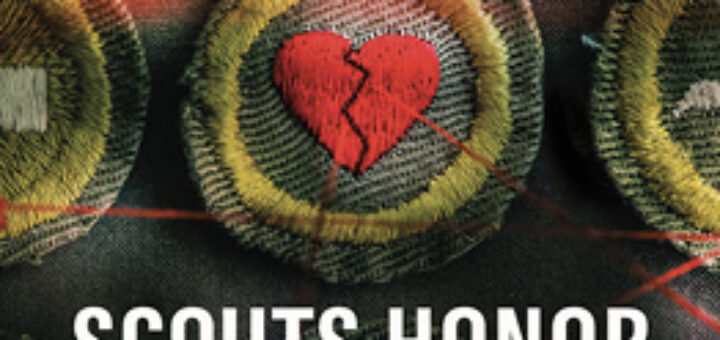Scout’s honour and a government’s promise: how ‘opportunities for learning’ became generations worth of shame

By Alex Padilla, Contributor & Emma Duke, Features Editor
In September 2023, Netflix released a documentary called Scouts Honor: The Secret Files of the Boy Scouts of America. The documentary paints a picture of a decades old institution that has systematically hidden evidence of sexual abuse and protected its perpetrators. In this documentary, we hear from high-ranking members of the Boy Scouts of America (BSA), and from the countless men who were victimized during their time as boy scouts.
The timing of this documentary’s release couldn’t be more relevant as we approach the National Day of Truth and Reconciliation — also known as Orange Shirt day, on Sept. 30.
Although the two situations can in no way be compared, I hope that the documentary on the BSA can help make you understand and build a larger sense of empathy for those victimized by residential schools. There is no doubt that even today, where Indigenous voices have a larger audience than ever, there are individuals who still wish to denounce the continued suffering of Indigenous communities as a result of the residential school system.
In the documentary, Patrick Boyle, the journalist who first broke the story about sexual abuse in the BSA says that one of the main criticisms he heard is that he was tarnishing the reputation of the BSA for a “problem that’s miniscule.” The message being that the reputation of the organization is more important than the safety and well-being of its members.
Boyle mentions that the process of bringing the article to publication was particularly challenging because you weren’t just accusing some random creep, you were stating that a trusted and “respected community leader” could be, and was capable of “the worst crime imaginable.” Not only were these leaders role models for the victims, but they were esteemed by the entire community. Doug Kennedy, a BSA youth leader at the time of his assault, outlines the difficulties with reporting predators: “He’s my employer, he’s the person who’s putting food on the table, the person my mother trusts. He’s the person that everybody else is going to believe.”
In Canada, it took about 125 years after residential schools became government sponsored to accept what we had done to Indigenous children. The BSA documentary can also help explain why it took so long for survivors of the residential schools to even come forth.
Some victims say they weren’t aware what happened to them was abuse until adulthood. They described feeling guilty and at fault for what happened to them. Many lament the fact that they didn’t do something, because they think they could’ve, or should’ve acted. Sadly this is a common experience among childhood sexual abuse survivors, according to a study published in Dignity: A Journal of Exploitation and Violence.
When we hear the term ‘sexual abuse’ without any context about what actually occurred between a child and a perpetrator, it’s easier for people to ignore and diminish victims, because the greatest discomfort they will experience is just hearing the words ‘sexual abuse’ put together. According to Michael Johnson, former child crimes detective and ex-youth protection director of the BSA “people are uncomfortable” with the fact that these young men who were victimized were being assaulted by men “in their cars, in tents, at their house” that they were violated orally, anally, digitally, etc. and sometimes even brutalized.
And when communities do this, it continues to victimize the child. Many of the former boy scouts describe their experiences with community alienation—even the fear of alienation kept them from coming forward with their experiences. Kennedy explains that he loved the BSA, he says it was meaningful, and thought it had a positive mission. He also says that the risk of being alienated from the program, as opposed to his abuser, played a factor in his choice to not report.
With residential schools, there exists more nuances. According to a report by the Truth and Reconciliation Commission of Canada titled “The Survivors Speak,” many parents’ hands were forced in order to send their kids to these institutions. Indigenous communities were already dealing with poverty — as a result of generations worth of anti-Indigenous policies — and an opportunity presented itself to struggling parents, for others, non-compliance came with the threat of imprisonment.
The intention behind these forced-assimilation institutions is irrelevant. An estimated 150,000, if not more, Indigenous children went through the residential school system and were exposed to not only neglect but physical, mental, and sexual abuse, all while they were stripped of their culture and sense of community. The effects of residential schools continue to be felt to this day. Indigenous people have poorer health outcomes, according to Global News, as well as lower educational outcomes, according to Statistics Canada, and experience disproportionately high rates of violence, as outlined by the CBC.
The first step forward is to acknowledge these issues, and then, to listen openly, and earnestly to Indigenous communities and survivors as they lead the way. Take this upcoming week of Truth and Reconciliation to educate yourself on settler colonialism and the part we all play in upholding systemic inequality. In both the cases of the BSA and the Indigenous residential schools, one common thread remains: thousands of individuals are still affected by not only the abuse they suffered, but also systemic denial, deflection, and inaction. No matter how much people try to bury it or want to live in denial, an inconvenient truth is still the truth.


